Benin
Benin in long form the republic of Benin is a country in West Africa, which covers an area of 114,764 km2 and extends over 700 km, from the Niger river in the north to the Atlantic coast in the south. Benin had 10,741,458 inhabitants in 2016. The country is part of the ECOWAS and has as neighbors Togo to the west, Nigeria to the east, Niger to the northeast and Burkina Faso to the northwest. Benin achieved full independence on August 1, 1960, under the name of Republic of Dahomey. Powers were passed on to President Hubert Maga by French Minister of State Louis Jacquinot. In 1972, the officer Mathieu Kérékou took power: in 1974 he adopted Marxism-Leninism as the official ideology of the government and, in 1975, renamed the country People’s Republic of Benin. At the end of the 1980s, serious economic difficulties led to the end of the regime: Benin began a process of democratic transition and, in 1990, adopted a new constitution. The democratic transition is ensured by Nicéphore Dieudonné Soglo, former Africa Director of the World Bank. The name of Benin is preserved, the country simply becoming the Republic of Benin. Mathieu Kérékou, defeated in the elections by Nicéphore D. Soglo, gives up power. He returned to it democratically by the ballot box in 1996 and did not restore the dictatorship; he governed the country until 2006.
The official capital is Porto-Novo (named Xogbonou by the Gouns and Adjatchè by the Yorubas), Cotonou being the economic capital. Benin has French as its official language and the CFA franc as its currency. The political regime of Benin is presidential and the incoming president is Patrice Talon, who succeeded Boni Yayi during the elections of March 20, 2016. The handover between outgoing president Boni Yayi and his successor, the Businessman Patrice Talon was held on April 6, 2016 at the Palais de la Marina in Cotonou. Benin is part of several international organizations, including the International Organization of La Francophonie and the Organization of Islamic Cooperation. Since the end of the People’s Republic of Benin, Benin has had a very strong image as a democratic country throughout sub-Saharan Africa. And according to international experts, this African nation can be considered the most stable due to its constitutional and political institutions.
Benin’s history
Stand
The country is made up of two geographic areas: the north (now bordering Niger and Burkina Faso), which has known the fate of the savannah peoples; the south and the center of the country which are marked by the history of the peoples of the Gulf of Guinea. We find this difference in the qualifications of “Africa of granaries” and “Africa of baskets”. The first refers to the granaries of corn or millet found in the area of African savannas, such as in Mali, Niger or Burkina Faso. The second is located around the equator and corresponds, in West Africa, to the south of all the coastal countries of the Gulf of Guinea. In the latter, because of the equatorial climate favorable to agriculture, there is no point in storing, you just have to “wear”. Until the fifteenth century, many peoples of the savannah settled in the north: Bariba or Baatombu Dendi Zarmas Groussi Hausa Mossi Paragourma Fulani or Fulbe Somba As coastal populations settle in the south and in the center: Goun Mahi Fon and Aja or Adja Ewe Gen Ayizo-gbe Mina Yoruba Missinhoun
Old social organization
Ancient communities are structured on the basis of lineages. Living on restricted territories, these populations do not need political organization. Their social organization is based on respect for customs and dead ancestors. Authority is exercised orally by sharing these traditions. We still find such populations in the northwest of the country: Berbas, Kabyés or Tanéka. When several lines come together, they are structured in chiefdoms. The head may be a representative of an ancient family or a priest. He surrounds himself with dignitaries, each responsible for a collective activity and forming a council. From the 15th century, the social structure became more complex and kingdoms appeared. Three major cultural areas emerged: Bariba to the north, Yoruba and Aja-Ewé to the south.
Bariba Kingdoms
The north of the country has known several bariba kingdoms (or baatombu) and in particular the kingdom of Nikki. It was from this northeastern village that a dynasty, created in the sixteenth century by Sunon Sero, extended its domination over the region. Its emperor, Séro Kpéra, died in 1831 while fighting alongside the Yorubas of Oyo (Nigeria) the attacks of the Peuls. The kingdom was disorganized when the colonial armies invaded it at the end of the 19th century. Other Bariba kingdoms like that of Bouê (Gamia), Kika, Kouandé with the Bagana, Kandi with the Saka, and Parakou with the Kobourou, were also quite famous. Their societies are structured in strict social classes: noble warriors, griots, commoners farmers, craftsmen and slaves. The Baribas meet around the feast of Gaani. It is a cultural and identity festival celebrated each year throughout the Bariba kingdom around Nikki’s Sina Boko.
Yoruba Kingdoms
The area of influence of the Yoruba covers the east of the country and is distinguished in two kingdoms: the kingdom of Shabê-Okpa and the kingdom of Kétou. These two kingdoms were created by two brothers descendants of the king of Ife Okandi (at the same time as the kingdoms of Owu, Popo, Benin, Ila Orangun and Oyo). Next to these two kingdoms, there is a Yoruba population of older emigration: the Idaatsha and the Ifè and the Isha. To this ancient group must be added the Manigri and the Mokolé further north in the commune of Kandi.
Aja-Ewe kingdoms
According to ancient oral and written traditions, the Aja-Ewé emigrated from the fourteenth century from the city of Tado, located on the banks of the Mono river in Togo. They establish in the south two kingdoms: in Sahè or Savi, and in Davié corresponding to the current city of Allada.
Around 1620, the heirs of the kingdom of Allada disputed the throne. From their split results the formation of two additional kingdoms. In the south-east, Zozérigbé creates the kingdom of Hoogbonu in the locality of Ajashe, future Porto-Novo. And to the north, Hwegbaja (1645-1689) established the kingdom of Dahomey, starting from its capital Abomey. In the 18th century, a series of conquests was made under the authority of twelve traditional kings, starting with Gangnihessou. In 1724, Agadja (1708-1732), king of Danhomey, seized the kingdom of Allada. Then, in 1727, he submitted that of Savi. In 1741, it was Ouidah’s turn to fall under the yoke of his successor Tegbessou.
The country now has a large window on the sea. The kingdom has become accustomed to trade, commercially and politically, with the Portuguese and the Dutch, who arrived at the end of the 15th century. Dahomey becomes an organized political entity, very original in the region. The kingdom is a dominant power. King Hwegbaja even has at his disposal a contingent of Amazon women, former elephant hunters. It is a complex, refined, efficient but also violent and bloody society, especially during royal funerals which were accompanied by human sacrifices. From the seventeenth century, these kingdoms, which are structured around the cities of Allada, Hoogbonu and Abomey, prosper with the development of local commerce. Dutch, Portuguese, Danish, English and French set up trading posts along the “Slave Coast”. 1650: construction of an English fort in Ouidah 1664: installation of Breton Capuchin missionaries in Ouidah 1704: construction of a French fort in Ouidah 1752: installation of the Portuguese in Hoogbonu which they rename Porto-Novo in 1782 In the first half of the 19th century, King Ghézo of Dahomey developed the cultivation of oil palm and introduced new crops (corn, tomato, peanut, tobacco). Regular and clean villages, and well-ordered cultures cover the country.
Colonization
In 1851, France signed a trade and friendship treaty with the chief of Porto-Novo, King Toffa I, vassal of King Glélé of Dahomey, who reigned from 1858 to 1889. By the treaties of 1868 and 1878, the region of Cotonou, located between Ouidah, a Portuguese trading post, and Porto-Novo, was ceded to France. In 1883, the king of Porto-Novo, wishing to protect himself from the expansionist aims of Dahomey, signed a protectorate treaty with France. One of the most mythical kings of the kingdom of Dahomey, the very noble king Béhanzin (with the shark as an emblem) attacked the French in Cotonou in 1890, guarded French hostages for 73 days, then besieged other porto-novian villages protected from the French. He even declares to the French to leave him alone, proudly defying: “If you want war, I am ready. ” Béhanzin goes on his own to stop the massacre of his people. He was captive in January 1894, then deported to Martinique. The French establishments were then grouped together within the Dahomey colony. In the North, the Bariba kingdom of Nikki, which had reached its peak in the 18th century before coming up against the expansionism of the Nigerian kingdom of Ilorin, opposed strong resistance to French colonization. In 1899, the colony of Dahomey integrated French West Africa (AOF) into the French Colonial Empire. The borders were established by mutual agreement with the United Kingdom (then fixed in Nigeria) and with Germany (then present in Togo). After the First World War, schooling became very important, especially thanks to religious missions, and developed especially in the south, which became one of the main political and intellectual centers of the AOF. Numerous political parties were founded at this time, at the same time as a press opposing the colonial system developed. Joined with free France during the Second World War, Dahomey becomes in 1958 an autonomous State within the French Community. The country gained independence on August 1, 1960 and entered the following month at the United Nations, under the name of Republic of Dahomey.
Independence
Since independence, Benin has had a turbulent political history. The first twelve years were marked by chronic instability, the former colonial elites, mostly from the South, vying for power. In 1963, the north of the country wanted revenge, while the elites and the new bourgeoisie seemed little concerned with the many challenges of underdevelopment. It was during this period that a certain colonel Christophe Soglo (Nicéphore Soglo’s uncle) arrived on the political scene of the country, forcing Hubert Maga, first president of the independent Dahomey Republic, to resign. In six years, four coups and military regimes were recorded, shortening short-lived civil periods which saw successive Sourou Migan Apithy, Justin Ahomadegbé and Émile Derlin Zinsou in power. In 1970, a Presidential Council made up of three members, Maga, Apithy and Ahomadegbé (a rotating presidency with three) took power and suspended the constitution. The presidents’ round could not be done. Indeed, only Maga was able to spend the two years retained at the head of Dahomey. No sooner had Ahomadegbé started his turn of leadership in 1972 than the army, under the leadership of Captain Mathieu Kérékou, decided to take over the government, dismissed the Presidential Council, and Mathieu Kérékou became the new chief of the ‘Dahomean State. He was quickly appointed commander. But the soldiers find themselves helpless, without a program and without ideas. Their power is empty and it is in this vacuum that the ideas of young soldiers and students who lived in France during the period of May 68 will be engulfed.
People’s Republic of Benin (1974-1990)
In November 1974, Mathieu Kérékou imposed Marxism-Leninism as the official ideology of the state. In 1975, to reduce the political weight of the South, the name of Dahomey was symbolically abandoned for that of Benin, from the name of the kingdom which had once flourished in neighboring Nigeria. The country takes the official name of the People’s Republic of Benin. The regime of the People’s Republic of Benin underwent major transformations during its existence: a brief nationalist period (1972-1974); a socialist phase (1974-1982); and a phase comprising an opening towards Western countries and economic liberalism (1982-1990). Extensive economic and social development programs are in place, but the results are mixed. In 1974, under the influence of young revolutionaries the “Leaguers” the government launched a socialist program: nationalization of strategic sectors of the economy, reform of the education system, establishment of agricultural cooperatives and new administrative structures local, launch of a campaign to eradicate “feudal forces” including tribalism. The regime prohibits opposition activities. Elected president by the Revolutionary National Assembly in 1980, re-elected in 1984, Mathieu Kérékou escapes three coup attempts in 1988.
In the 1980s, Benin’s economic situation became more and more critical. The country knows high economic growth rates (15.6% in 1982, 4.6% in 1983 and 8.2% in 1984) but the closing by Nigeria of its border of its border with Benin causes a sharp fall customs and tax revenues. The state is no longer able to pay the salaries of civil servants. In 1987, IMF plans imposed draconian economic measures: additional deductions of 10% from wages, hiring freeze, forced retirement. In 1989, a new agreement with the IMF on a program of adjustments to economic structures triggered a massive strike by students and civil servants. Benin, with the decisive support of France, which President Kérékou has decided to trust, is embarking on a perfectly successful democratic transition in conjunction with the process of economic reform. After the conference of the living forces of the nation led by the Catholic Prelate Isidore De Souza, a transitional government, set up in 1990, paves the way for the return of democracy and a multiparty system. Prime Minister Nicéphore Soglo defeated Mathieu Kérékou in the presidential election of March 24, 1991.
First years of democratic renewal (1990-2006)
Nicéphore Soglo, the first elected president of the era of democratic renewal, should put the country back on the tracks of the market economy by creating the conditions favorable to economic growth. Thanks to the renewal of the system of government, President Soglo will restore the coat of arms of endogenous religions by reconciling traditional powers and makes January 10 of each year National Voodoo Day. However, the weight of social constraints to economic growth as well as the structural adjustments which aimed, among other things, at the compression of public spending recommended by the IMF, rekindle the general discontent of the population. In addition, traditional traffic flourishes in broad daylight (whiskey, petrol, cement, cars, etc.). After losing his majority in the Legislative Assembly, President Nicéphore Soglo, accused of nepotism by his opponents, was beaten by Mathieu Kérékou in the presidential election of March 17, 1996. It was a shock for Nicéphore Soglo who, after having shouted at the plot, sends his congratulations to Mathieu Kérékou and goes to meditate for more than four months, outside Africa, the reasons for his fatal errors.
Democratically, Mathieu Kérékou is back on the Beninese political scene, having led the country for seventeen years (from 1972 to 1990) in the political and economic fiasco of the now former People’s Republic of Benin. The legislative elections of March 1999 barely brought victory to the Renaissance of Benin (RB), the opposition movement led by Rosine Soglo, wife of former President Nicéphore Soglo. These elections mark the failure of the African Movement for Democracy and Progress (MADEP), the party of one of those close to President Kérékou, the businessman Séfou Fagbohoun. However, in March 2001, Mathieu Kérékou was re-elected president of the Republic with 84.06% of the votes. Arriving at the head in the first round, facing his predecessor Nicéphore Soglo, he will be faced with the withdrawal of the latter as well as that of Adrien Houngbédji arrived in third position. These two candidates who resigned described the ballot as a “masquerade”. Tarnished by suspicions of electoral fraud and aged sixty-seven, Mathieu Kérékou therefore begins a second consecutive term in fragile economic conditions.
Presidency of Boni Yayi (2006-2016)
Since 2001, Benin has been plunged into serious economic difficulties, due to the difficult situation of the autonomous port of Cotonou, the oil shock, the crisis in the cotton sector, very extensive smuggling, the plethora of administrative staff. or serious electricity supply problems created by droughts. Benin is in a difficult economic period which only agriculture, relatively diversified manages to maintain competitive vis-à-vis its neighbors. Thus in the March 2006 elections, the Beninese decided to express their “fed up” and that the political novice, the former president of the West African Development Bank (BOAD), the Doctor Boni Yayi succeeds to general surprise to Mathieu Kérékou with 75% of the votes (note a strong participation rate of 76%). Mathieu Kérékou who had refused to change the constitution could not stand for re-election. He was none the less opposed to Boni Yayi, too novice for his taste. In fact, a few days before the results the former president, nicknamed “the chameleon”, plunged the country into doubt, publicly declaring that during the course of the election there had been dysfunctions in the organization, with problems with electoral lists and voter cards. Despite this, the coordination of independent international observers welcomed during a press conference in Cotonou, the conduct of the second round of the presidential election in Benin, judging that it had been “very good”.
President of Patrice Talon (since 2016)
Patrice Talon won the March 20, 2016 election with 65.39% of the vote against Lionel Zinsou (34.61%) of the votes. In April 2017 and in July 2018, the Beninese parliament rejected a constitutional reform. The government announced in the wake of the holding of a referendum on this reform before withdrawing in August of the same year. Defense Minister Candide Azannai presented his resignation in March 2017 to express his opposition to this reform project. Presented by the press as one of his closest political supporters, it is a blow to Patrice Talon. In 2018, a new court of justice is created. The Court for the Suppression of Economic Offenses and Terrorism (CRIET) appears for political opposition to President Talon as an institution subservient to the latter’s power. According to journalist Ariel Gbaguidi, the CRIET is “set up as a superpowerful justice ready to neutralize any voice opposed to that of the head of state and to prevent any political competition”. Since the creation of CRIET, the West African Network for Peacebuilding (WANEP-Benin) has affirmed that there are “risks of vassalization of the judiciary”. In February 2018, in preparation for the April 2019 legislative elections, political parties supporting Patrice Talon’s action gathered in the Progressive Union.
In March 2019, the Autonomous National Electoral Commission validated only two of the 7 lists presented, both favorable to President Patrice Talon, for the elections of April 28, 2019. The opposition found itself de facto excluded from the elections. On March 29, the African Court of Human Rights, meeting in Arusha, denounced abuses that distanced the country from the rule of law. Jean-Baptiste Elias, leader of the Front of National Organizations against Corruption, said in April 2019 that “democracy risks turning into a dictatorship” in Benin. In the context of controversial and unopposed legislative elections, the NGO Social Watch Benin decides not to participate in the process unlike the electoral sequence of 2015.
A few months after the elections, in May 2019, a jihadist intrusion was noted with the kidnapping of two French people in Pendjari National Park. This event, even if the hostages are released by an intervention of French forces, confirms the possibility of seeing jihadist groups descend to the Gulf of Guinea as the destabilization of Burkina Faso, and central Mali. It also thwarts one of the economic objectives of the Beninese president, Patrice Talon, to develop tourism in his country.
Benin’s politics
On April 6, 2006, the new president of the Republic of Benin, 54, was officially installed in his villas in Cotonou. The new president who advocates a “cooperative and united Republic”, listed the four priorities of his mandate which are human resources, concerted governance, the development of entrepreneurship, the construction of new infrastructure. The former president of the West African Development Bank (BOAD) was elected president of the Republic after the second ballot on March 5, 2006, garnering 74.51% of the vote, against 25.49% for Me Adrien Houngbédji, who presented his congratulations to the newly elected official. An independent candidate, Boni Yayi was able to rally the tenors of Benin’s politics such as Albert Tévoédjrè, Émile Derlin Zinsou and around twenty deputies to the National Assembly, before benefiting from the voting instructions of almost all of his competitors in the first round, the outcome of which he totaled a little more than 35%, against 24% for his prosecutor Me Adrien Houngbédji.
Apparently, the voting instructions were followed. However, some observers believe that with or without instructions, the “candidate for change” would have passed. In the eyes of voters and more particularly young people and the business community, Boni Yayi (economist) embodies the hope of an economic recovery, the reduction of unemployment, the fight against corruption, good governance. Mathieu Kérékou’s successor has promised double-digit growth (currently around 5%) and the positioning of Benin at the top of West African cotton producers from the 2006-2007 crop year. Although surrounded by the entire political class, Boni Yayi refuses to engage in political politics. “We have come to produce wealth,” he said, refusing to constitute a “government of thanks.” However, well-informed sources indicate that he asked political parties to offer him officials for the formation of the government. The legislative elections of March 31, 2007 gave the majority to the Force Cauris for an emerging Benin (FCBE). President Boni Yayi was re-elected for a second term in the presidential elections of March 2011. Obtaining more than 55% of the vote, compared to 35% for his main competitor Adrien Houngbédji, Boni Yayi was elected in the first round. As soon as he took office, he undertook not to modify the constitution in order to run for a third term and therefore left office in March 2016, after the next presidential elections. He is succeeded by Patrice Talon, independent candidate and former businessman.
Benin’s economy
Benin is a member of the West African Economic and Monetary Union (UEMOA). Its currency is the CFA franc. It belongs to the group of least developed countries. In terms of human development index (HDI), it ranks 163rd out of 189 in the 2017 UNDP report, down two places compared to 2016. For 2020, it is ranked 149th out of 190 in the Doing business report, which calculates the ease of doing business index, against 153rd the previous year.
However, the growth rate, which fell to 2.5% in 2010 (the lowest in West Africa), has been slightly higher than 5% since 2011. However, growth, lower inflation and the development of infrastructure are not enough to reduce overall poverty, due to the lack of redistribution, demographic pressure and the presence of a very large informal sector, in particular strong growth since the 1980s. The autonomous port of Cotonou (PAC) is one of the pivots of the Beninese economy. However, 80% of imported goods are re-exported to Nigeria, making the country very dependent on its powerful neighbor. The other source of wealth is cotton, a crop that has achieved excellent harvests, even if on the world market, the price of a pound of fiber in 2015 was around 0.70 dollar, relatively low compared to the peak of 2 dollars per pound it had reached in 2011. Benin was in fourth place among the top seven African cotton producers in the mid-2010s.
The main crops are mainly food: yams, cassava, corn, sorghum, paddy rice, fruits and vegetables. The breeding mainly concerns the cattle herd which counted 2 111 000 heads, sheep (842 000), goats (1 674 000), pigs (398 000) and poultry (17 683 000) according to the data of the Direction of Livestock (2012). The national pig population is constantly under threat from African swine fever (ASF) which rages in an enzootic form. Unconventional farming is gaining momentum with an increasing number of breeders of laying hens, rabbits, snails, broilers and bees. Agribusiness is growing with a craze for young agripreneurs who are developing several initiatives based on information and communication technologies. Websites (Louis Agbokou’s blog for example), online sales platforms for agricultural products (BenAgri platform for example), specialized magazines (La Voix Rurale for example), WhatsApp and Facebook groups are created between players of the agricultural sector. These types of actors, mainly young people, discuss among themselves the concerns relating to their activities and contribute to the development of the agricultural sector. Fishing often remains artisanal, it is competed by foreign boats. We also note the development of fish farming with high species Clarias and Tilapia. Tourism represents 2.5% of the country’s GDP, which ranks fifth among destinations in West Africa. In 2013 it welcomed 230,946 foreign visitors against 219,949 in 2012. Its main assets are the beaches and lake cities of the south (Ganvié), the animal parks in the north (Pendjari and W), Abomey and its royal palaces, Ouidah, place of memory of slavery and cradle of voodoo worship.
Benin’s demography
Following the 2002 General Population and Housing Census (RGPH3), a fourth census (RGPH4) took place in 2013. Its final results were published in June 2015, but estimates are calculated more frequently. The size of the population has evolved at a rapid pace. The country had 878,000 inhabitants in 1910 and 1,528,000 in 1950. After independence, there were 2,106,000 in 1961, then 3,331,210 in 1979 and 4,915,555 in 1992. The 2002 census counted 6,769,914 people. According to an estimate from July 2015, Benin had 10,448,647 inhabitants on that date and ranked 88th in the world.
The Beninese population is young and predominantly female, predominantly rural, but city dwellers already represented 44% in 2015 and the annual urbanization rate was 3.67% between 2010 and 2015. Benin is made up of a large number of ethnic groups, of variable numerical importance and uneven geographic distribution. According to the 2002 census (which includes related populations), the Fon are the most numerous (39.2%), strongly located in the southern departments. Adja (15.2%) are concentrated in Mono and Couffo. The Yoruba (12.3%) are very present in the Collines and Plateau departments. The Bariba (9.2%), the Batammariba (6.1%), the Yoms (5.5%) and the Peulhs (4%) live more in the north. Benin was home to several thousand refugees, notably from Togo, but this number has considerably decreased since the implementation, with the support of UNHCR, of a new integration strategy in 2013.
Benin’s education
In Benin, the education system has to face sustained demographic pressure, with a probable increase of 25% in the school-age population between 2010 and 2020, therefore spending on education. Despite an unfavorable macroeconomic environment in recent years, the education sector retains a higher budgetary priority than in other countries of sub-Saharan Africa. The public and private sectors have developed jointly, school coverage has increased at all levels of education, but, with regard to primary education, it remains to improve access and reduce dropout in cycle course 66. Indeed, child labor remains a problem in Benin because the country happens to be the one with the most children aged 7 to 14 working, among the countries for which data are available (2008). The percentage is 76% for girls and 72.8% for boys.
The country has two public universities, the University of Abomey-Calavi (UAC) and the University of Parakou (UP), created in September 2001 to replace the University of Dahomey, founded in 1970 and which became the university National of Benin in 1975. There are other public establishments, such as the School of African Heritage (EPA), the National School of Administration and Magistracy (ENAM), the National Institute of Youth, the ‘Physical education and sports (INJEPS) or the Beninese Center for Scientific and Technical Research (CBRST) and many private institutions, such as the Benin University of Science and Technology (USTB).
Benin’s languages
The official language of Benin is French. The prestige of this language, as the language of the media, of administration and of interethnic communications, pushes for its learning, especially in urban areas. A variety of French called “French from Africa” has developed in the streets and markets of Cotonou. It is an almost slang talk. According to the 2014 OLF report, Benin has 35% Francophones in its population. Benin is a member of the International Organization of La Francophonie (OIF) and the Parliamentary Assembly of La Francophonie (APF). About fifty African languages are spoken on Beninese territory. Among them, only about twenty go beyond a restricted circle. The most common is fon, followed by yoruba, goun, mina, adja and bariba. English is used in the business world, especially for trade with neighboring Nigeria.
-
Benin
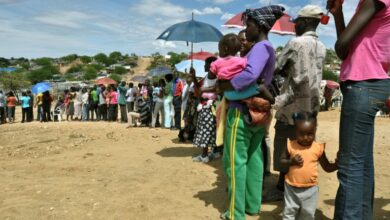
Benin’s Opposition Party Rejects Sunday’s Parliamentary Election Voting Results
Benin’s main opposition party, Les Democrats, on Thursday, rejected the results of Sunday’s parliamentary election, claiming allies of President Patrice…
Read More » -
Benin
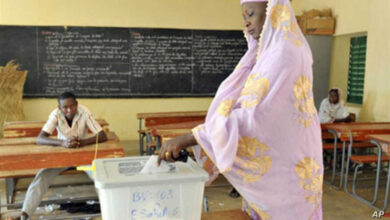
Voting Closes In Benin Parliamentary Election, Preliminary Results Expected By Next Week
Voting for parliamentary elections took place in Benin on Sunday where around 6.6 million voters were expected to vote in…
Read More » -
Benin
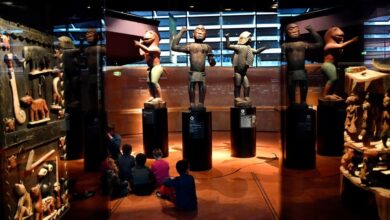
Benin: France Returns 26 Artifacts & Works Of Art Looted During Colonial Period
France on Tuesday returned 26 treasures to Benin that were looted in the 19th century. Roselyne Bachelot and Jean-Michel Abimbola,…
Read More » -
Benin
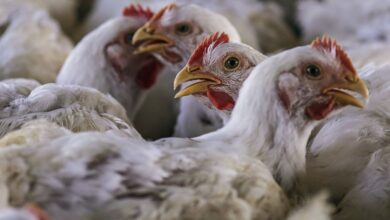
Benin’s Agriculture Ministry Confirms H5N1 Avian Flu Outbreak Near Porto Novo
Benin’s agriculture ministry on Wednesday confirmed an outbreak of the highly contagious H5N1 avian flu near the capital Porto Novo,…
Read More » -
Benin
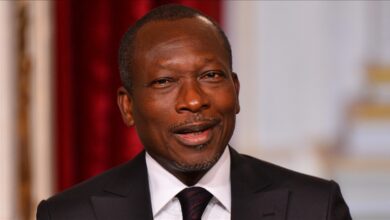
Benin’s Incumbent President Patrice Talon Wins Majority In First Round Of Election
Benin’s National and Autonomous Electoral Commission (CENA) on Tuesday announced incumbent President Patrice Talon has won a majority of votes…
Read More » -
Benin
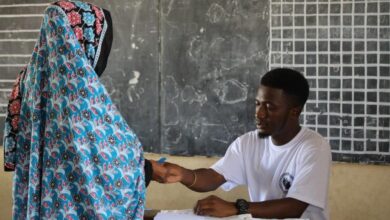
Benin: Vote Counting Begins After Opposition Parties Boycott Presidential Election
Vote counting started in Benin on Sunday in a presidential election that was marred by violence and boycotted by some…
Read More » -
Benin

Coronavirus: Four More African Countries Report First Confirmed COVID 19 Cases
Four more African nations including Benin, Liberia, Somalia, and Tanzania have confirmed their first coronavirus cases on Monday, reported Reuters.…
Read More » -
Benin
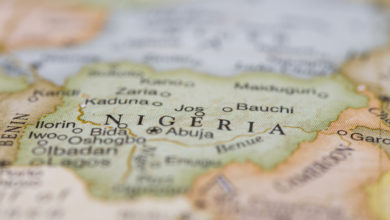
Nigeria, Niger, Benin To Set Up A Patrol Team To Check On Smuggling Activities
Nigeria, Berlin, and Niger on Thursday agreed to set up a monitoring committee to keep a check on smuggling activities…
Read More »

